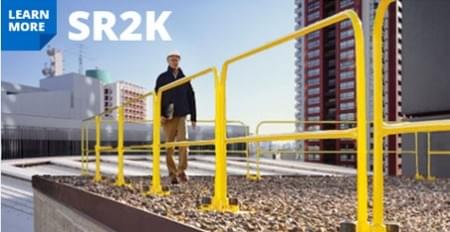Providing roof fall protection is key for any business. If you have a business with manufacturing sites in both the United States and Canada, then you're already aware that there’s both similarities and differences in safety regulations of the two countries. When it comes to safety, there are many basics which are simply a given, such as ensuring the safety of workers and guests to the sites. However, since regulations can be tricky to navigate, keeping the differences top-of-mind is a best practice for success in order to stay compliant in each location. Today, we'll focus on a few of the differences you should be aware of.
Canada and the United States have very similar rules when it comes to roof fall protection. However, these two countries implement their rules very differently. In the United States, facilities come under one central regulatory authority, OSHA or Occupational Safety and Health Administration, which defines regulations, conduct inspections, and handles safety incidents under one umbrella. In Canada, regulatory authority depends on where your facility is located and in some cases what kind of work you're performing. Most companies in Canada will fall under the authority of their local province.
Understanding the differences between US and Canadian safety regulations can be tricky business. For example, OSHA guardrail requirements are fairly similar to Canada’s regulations, but there may be small differences depending not only on the country, but the specific region or province.
When it comes to fall protection in the US specifically, you’ll want to refer to OSHA section 1926.500, which covers all facilities in the country. Keep in mind, some individual states, like California, have their own specific safety regulations, so a cross-check with state safety regulations is a good practice.
In Canada, start with Canada's central OH&S (Occupational Health & Safety Act), which covers plants that hire federal workers. This may be applicable if you have federal contracts or do general infrastructure work. From there, check the province of your facility, which has its own guidelines. You can find those specific fall protection guides here:
While the specifics and the governing regulatory agency will depend on where your business is located, most areas agree when it comes to the minimums you need for safety. In most cases, you will need to register with the local authority and/or submit specific roof fall protection equipment such as rooftop guardrails for inspection to the local authority for you area. There are a few areas where all rules agree.
 Fall Protection Equipment. Specific height requirements and relevant systems may vary from jurisdiction to jurisdiction. OSHA guardrail requirements agree with OHS guidelines across all of the provinces in many ways. First, you must have guardrail systems in place for any location where workers or others may fall from a substantial height. Rooftop guardrails must be tall and strong enough to protect workers from accidental falls. For example, OSHA guardrail requirements in 1910.29 give the height (42 inches or 3 and half feet) and weight requirements (at least 200 pounds of pressure.) In addition to rails or in place of them where rooftop guardrails may not be available, you may also need to provide fall systems such as body harnesses and safety nets. In Canada, the precise requirements (including inspection of equipment) will depend on your jurisdiction.
Fall Protection Equipment. Specific height requirements and relevant systems may vary from jurisdiction to jurisdiction. OSHA guardrail requirements agree with OHS guidelines across all of the provinces in many ways. First, you must have guardrail systems in place for any location where workers or others may fall from a substantial height. Rooftop guardrails must be tall and strong enough to protect workers from accidental falls. For example, OSHA guardrail requirements in 1910.29 give the height (42 inches or 3 and half feet) and weight requirements (at least 200 pounds of pressure.) In addition to rails or in place of them where rooftop guardrails may not be available, you may also need to provide fall systems such as body harnesses and safety nets. In Canada, the precise requirements (including inspection of equipment) will depend on your jurisdiction.Are you looking to make your workplace safer? With some careful attention to detail and location-specific usage of the right equipment for your business, you can achieve and maintain a workplace that is fully compliant with roof fall protection laws and regulations.